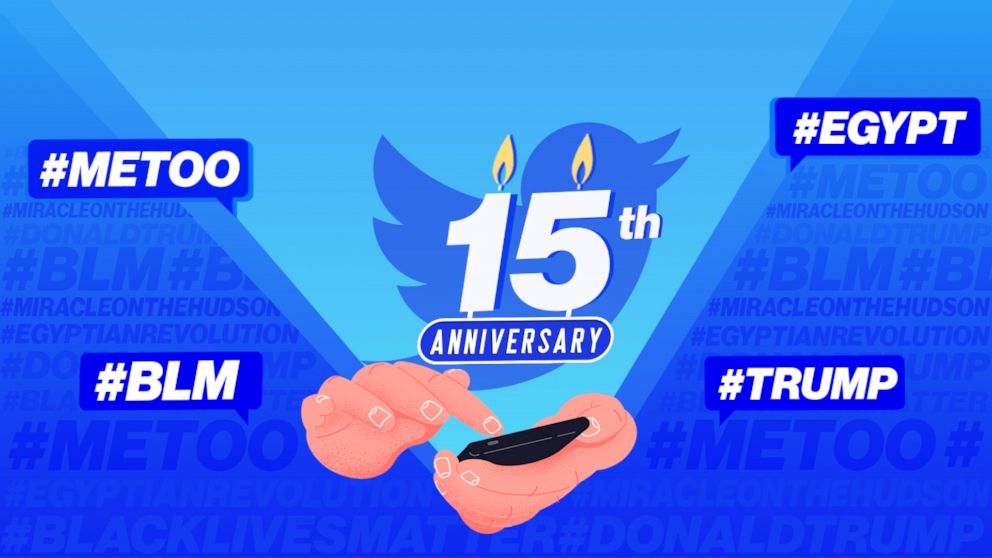Twitter turns 15: A look back at how the platform changed our lives
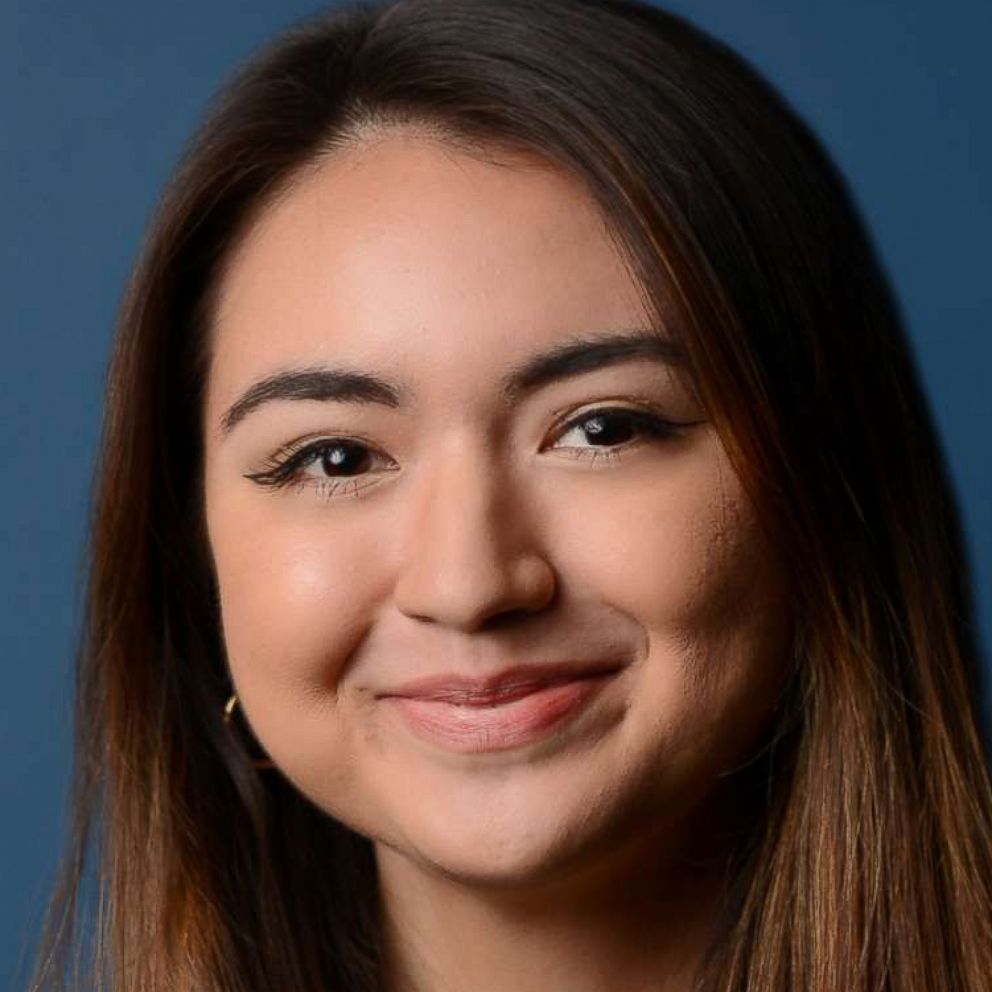
Fifteen years ago, a New York University dropout shared a cryptic message online: "just setting up my twttr."
Those five words from Jack Dorsey -- the first tweet ever -- are now being auctioned off, with offers as high as $2.5 million.
Very few could have predicted when it launched in 2006, but Twitter would go on to alter the media landscape, political discourse and society in permanent and profound ways.
By amplifying previously marginalized voices, Twitter aided in political movements and societal reckonings hashtag by hashtag -- from #MeToo to #BlackLivesMatter. It also contributed to the instantaneity of information -- both from traditional news media and citizen journalists, giving anyone, anywhere, an immediate window into history as it unfolded.
But the democratization of the internet that Twitter relied on meant that others could exploit it to spread messages of hate and disinformation, which continue to take hold despite efforts from the platform.
"One of the promises of Twitter was that it would let people connect and people without resources would be able to organize politically," Jonathan Nagler, a professor of politics at New York University and co-director of the NYU Social Media and Political Participation Lab, told ABC News. "And that applies both left and right, so you get Arab Spring and you get Charlottesville -- and then there's the elephant in the room of Donald Trump."
Twitter, as well as other social media platforms, has taken steps in recent years to crack down on misinformation and disinformation, but critics say it's not enough. Others say that labeling misleading tweets and banning politicians like Trump has impeded free speech, creating a new set of issues as users grapple with the fundamental question of whom to believe.
Here is a look back at some of the biggest moments in Twitter's 15-year history and how the platform changed the world.
2009: Miracle on the Hudson
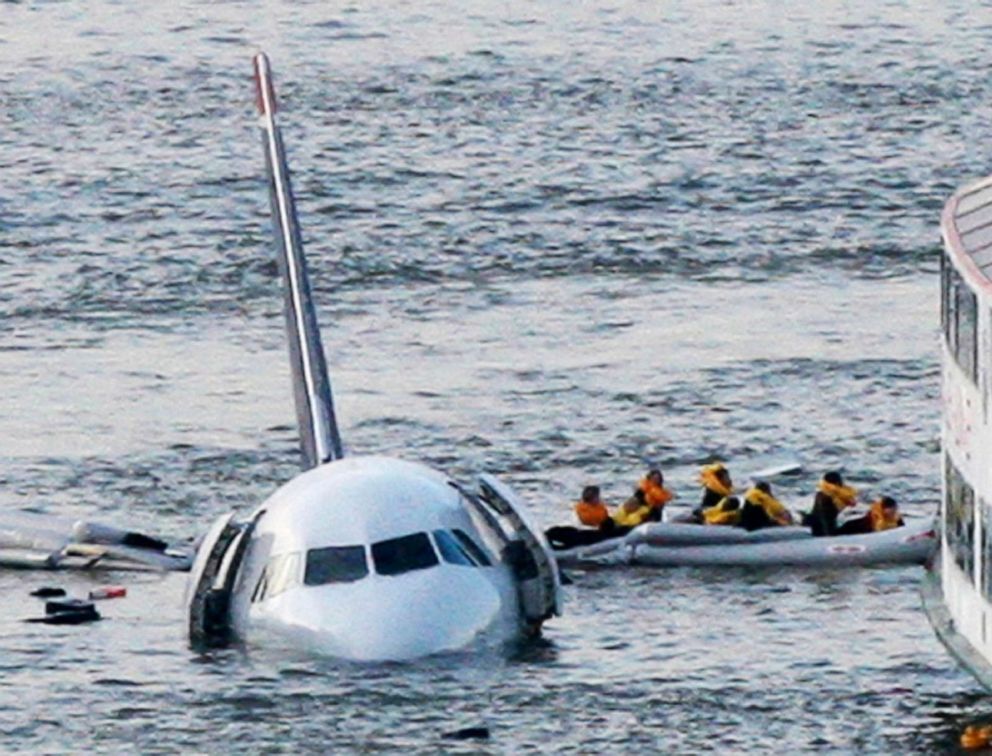
The storied landing of US Airways Flight 1549 on the Hudson River by pilot Chesley "Sully" Sullenberger is seen as a pivotal turning point for the burgeoning social media platform.
On Jan. 15, 2009, Janis Krums was taking a ferry to New Jersey when he snapped a photo of the plane in the water and shared it with his 170 Twitter followers. Many say this altered the media landscape for good as Twitter emerged as a new outlet for the near-instantaneous sharing of breaking news.
"I snapped the photo through a window right before we pulled up to one of the wings of the plane," Krums told ABC News via email. "I didn't take any other photos after that."
Krums said he then gave his phone to one of the passengers that was rescued and when he got his phone back, "I started to get calls from different news shows about the event and how I had used Twitter to notify the world."
"I had no idea about how quickly it went viral until later that night," he added.
"Twitter has become the news source, it's where people go to find breaking news," Krums said. "That wasn't the case then, I wasn't the only one on the ferry with a smartphone. But I was the only one who used Twitter to post the photo."
"Today everyone would be doing this, as we've seen with every major event since," he added.
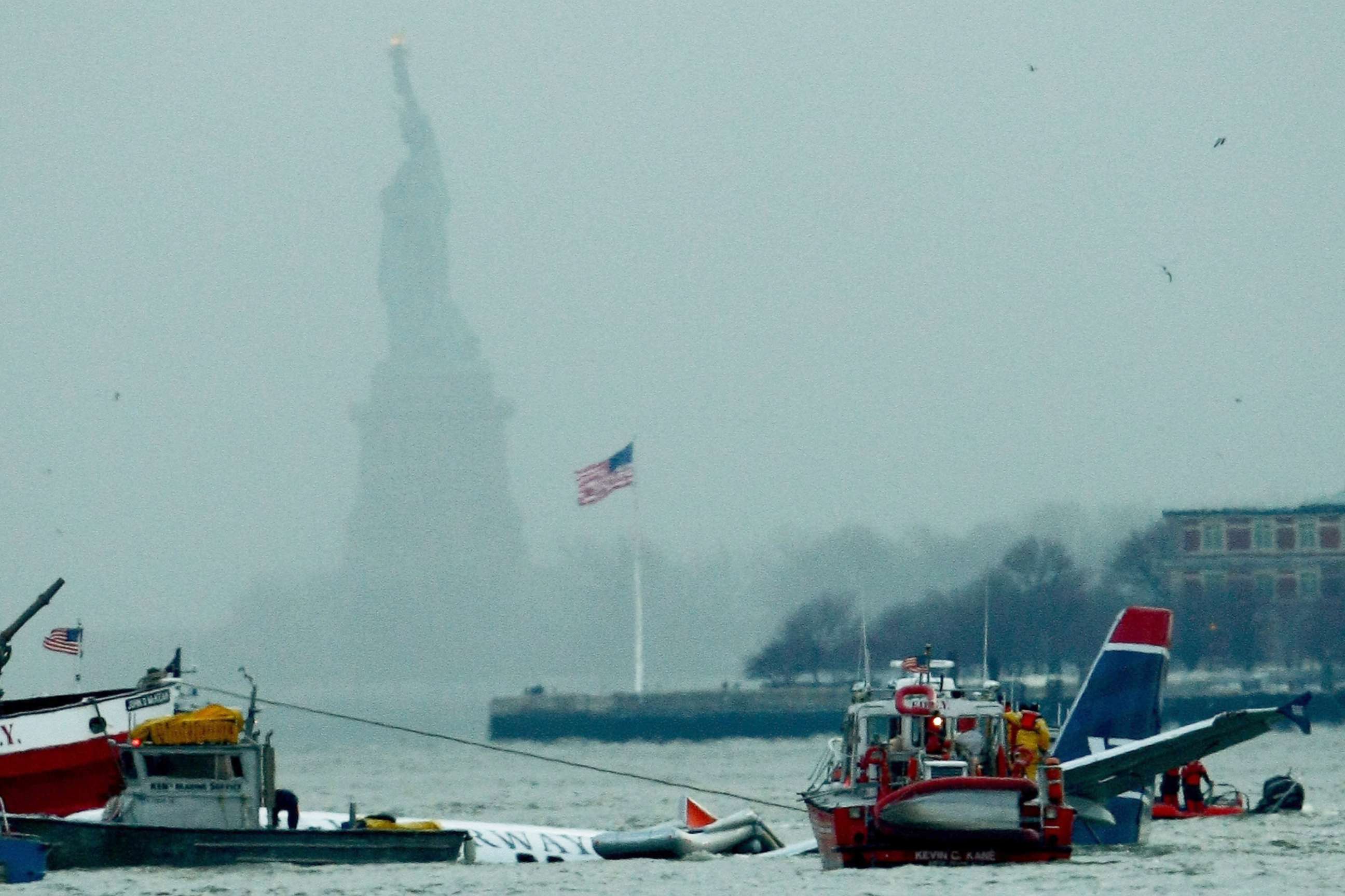
Twitter's co-founder and chief executive, Dorsey, said in a 2013 interview with CNBC that the Miracle on the Hudson "changed everything" for Twitter.
"Suddenly the world turned its attention because we were the source of news -- and it wasn't us, it was this person in the boat using the service, which is even more amazing," Dorsey told the outlet.
Krums said for him, his life is now "forever linked to Twitter and the Miracle on the Hudson."
2010: The Arab Spring
Starting in late 2010, a series of anti-government and pro-democracy protests erupted across the Middle East and North Africa in a movement that eventually became known as the Arab Spring. These largely leaderless protests calling for sweeping reforms in the human rights arena -- and in some cases revolution -- appeared in Bahrain, Tunisia, Egypt, Libya, Syria and Yemen.
In an apparent first, the rest of the world watched these uprisings occur in real time online.
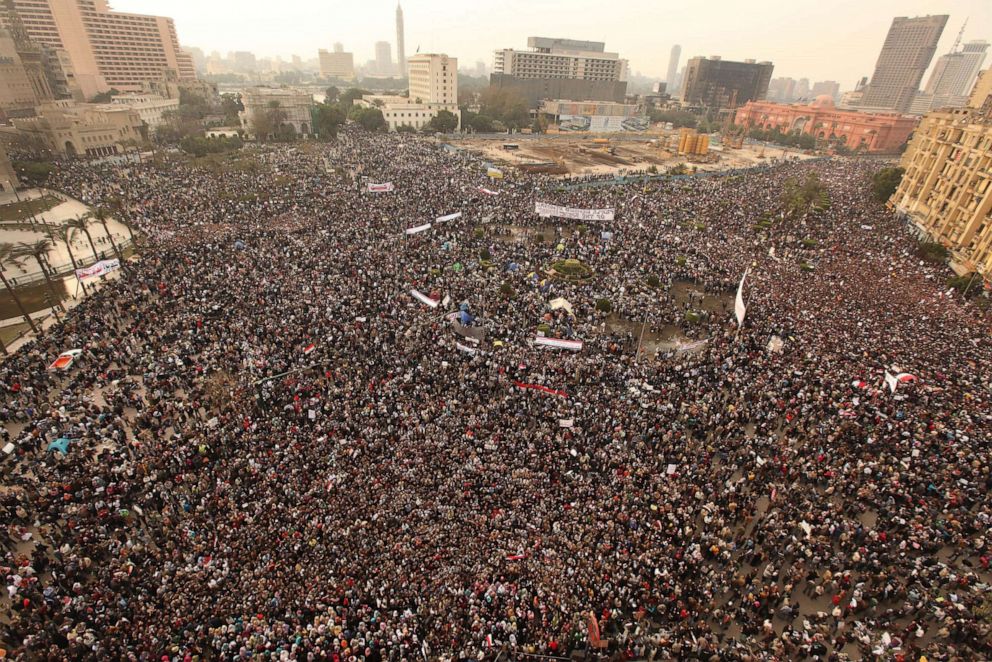
"Without Twitter and Facebook it's very hard for me to see the Arab Spring unfolding," Mohammed Soliman, a scholar at the Middle East Institute think tank in Washington, D.C., told ABC News. "I would say it's a digital revolution."
At a time when there was little to no freedom of the press in the region, Soliman said social media changed everything for masses of people, giving them a new place to share ideas and information that wasn't yet under the authority of the government.
Like many others at the time, Soliman said, "I think about Twitter in the Arab Spring as public space, as a public square."
Soliman said that Facebook had some limitations because of the privacy settings of certain groups and pages, so Twitter was used as the main platform to amplify messages from the region to the rest of the world.

In addition to publicizing what was happening to the rest of the world, Soliman said Twitter was instrumental in organizing protests and giving locals confidence by seeing that "there is actually a lot of people in the street."
Soliman said that when he first participated in protests in Egypt over the police killing of Khaled Said, he was live-tweeting the protests as they were happening.
"We were all tweeting in English," he added. "To send messages to press and international press club and that we are in the streets and there's something happening in Egypt."
"Twitter acted as an amplifier and multiplier of the message," he said. "And also Twitter acted as a way to comfort people to tell them that you are not alone when you go down to the streets."
Many of the 140-character messages that rewrote history in real time during the Egyptian revolution were memorialized in the 2011 book, "Tweets from Tahrir."
Joan Donovan, the research director of the Shorenstein Center on Media, Politics and Public Policy at the Harvard Kennedy School, told ABC News that "activists were early adopters of Twitter and really gave it its purpose."
"When movements and activists started to use it, it really showed the capabilities of Twitter," she added, noting it was seen across the globe, "from the Egyptian Revolution to the Occupy Wall Street movement in the U.S."
2013 to 2020: #BlackLivesMatter
The hashtag Black Lives Matter first emerged on a Facebook post following the acquittal of George Zimmerman in the shooting death of 17-year-old Trayvon Martin. The now-global organization's inception is linked to three Black organizers: Alicia Garza, Patrisse Cullors and Opal Tometi.
After its first appearance online, the hashtag appeared on Twitter a total of 5,106 times in the second half of 2013, according to a 2016 Pew Research Center analysis.
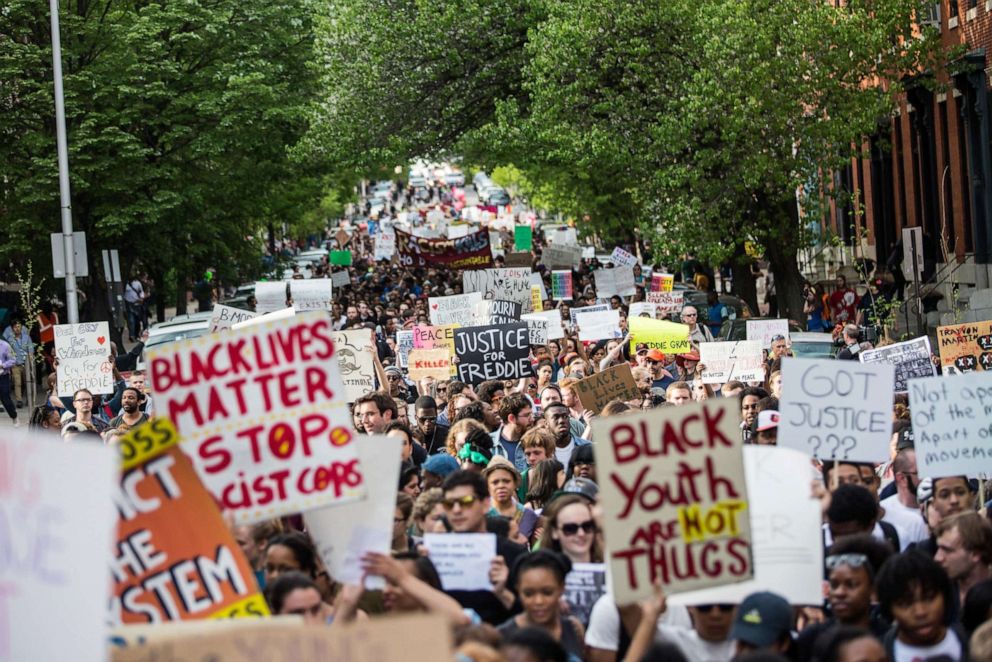
In August 2014, the hashtag resurged in response to the police killing of Michael Brown in Ferguson, Missouri. In the three weeks following Brown's death, the hashtag appeared an average of 58,747 times per day on Twitter, according to Pew. Three months later, on Nov. 25, when a Ferguson grand jury did not indict the officer involved in Brown's death, the hashtag appeared 172,772 times in a single day and in the subsequent three weeks was used some 1.7 million times.
The hashtag was continually used in the years that followed to draw attention to anti-Black racism and police brutality against Black Americans in the U.S.
In May 2020, after the police killing of George Floyd in Minneapolis, the hashtag once again exploded on social media as activists and everyday people used it to demand change.
Between May 25 and June 15, 2020, an astronomical 390 million tweets in the U.S. were about Black Lives Matter, according to company data, making up 17% of all conversations on Twitter in that time. The company said this was nearly 3.8 times any previous spike in the phrase on Twitter.
Deva Woodly, an associate professor of politics at The New School and the author of "The Politics of Common Sense: How Social Movements Use Public Discourse to Change Politics and Win Acceptance," said that she largely credits the offline work of activists in the BLM movement and organizing efforts for giving the movement its global prominence.
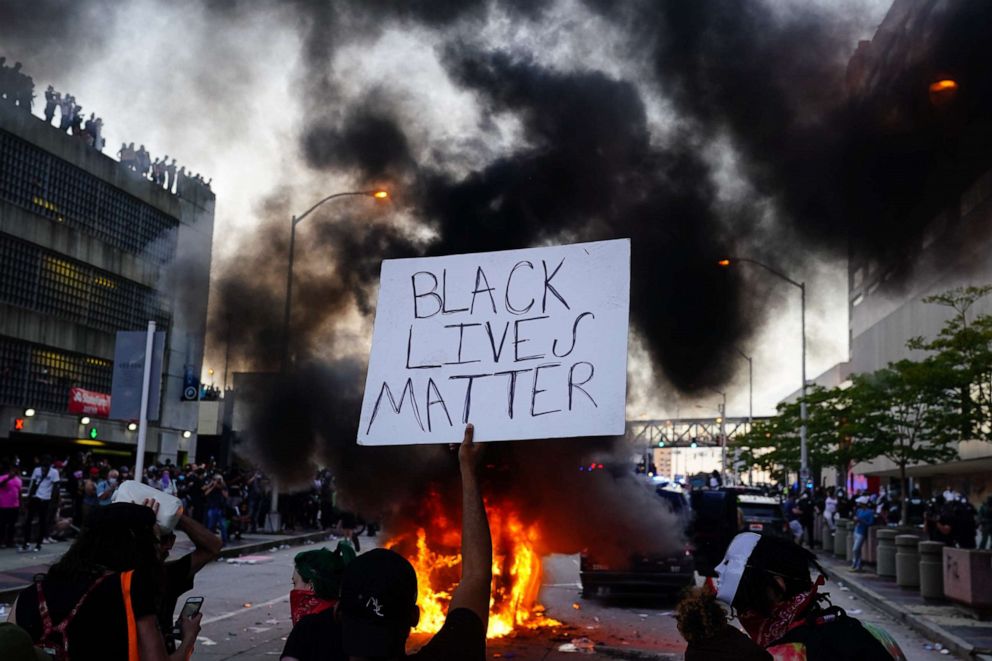
"But I think what Twitter had done, because Twitter has a particularly large impact on what mainstream media and non-online media covers, is that folks talking about the movement for Black lives under the hashtag #BlackLivesMatter on Twitter shaped the mainstream conversation about the social movement in a way that they otherwise would not have been able to," Woodly told ABC News.
"Where Twitter and other social media come in is as very important communication tools, they don't actually create movements or make movements," she added.
Nagler said he views social media as "an accelerant to a lot of things," citing the many cases of police brutality caught on cellphone video.
"That might not go anywhere if not for social media, because now one person with a cellphone is capable of broadcasting and instantly the whole planet can see it," he added. "And I think that's the power of social media."
2017: #MeToo
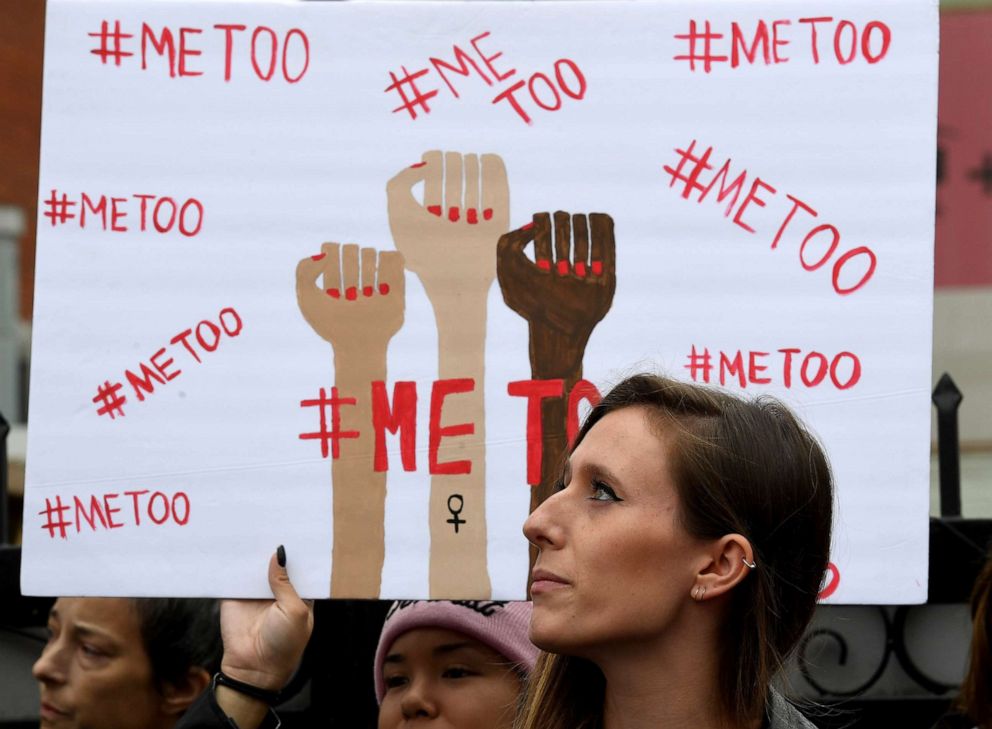
For decades, open discussions around sexual harassment and assault -- especially in the workplace -- went largely unspoken, enshrouded in taboo and stigma.
That is until a hashtag -- #MeToo -- exploded on Twitter, and eventually led to the toppling of many prominent public figures. The hashtag that opened the floodgates and empowered survivors to share their stories triggered a national reckoning on sexual violence.
While the #MeToo movement existed beforehand, the eruption of the hashtag stemmed from an October 2017 tweet from activist and actress Alyssa Milano as Hollywood was being rocked by allegations against Harvey Weinstein.
"If you've been sexually harassed or assaulted write 'me too' as a reply to this tweet," Milano wrote. She shared a photo of text with the tweet that read in part: "If all the women who have been sexually harassed or assaulted wrote 'Me Too.' as a status, we might give people a sense of the magnitude of the problem."
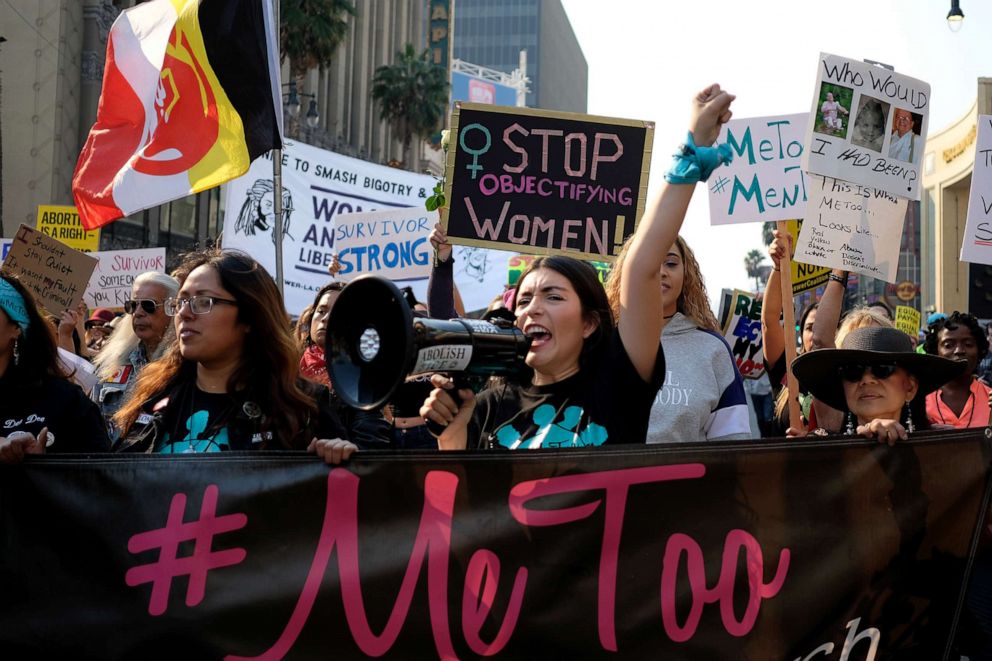
In less than a year, the hashtag #MeToo was used more than 19 million times on Twitter, according to an analysis from the Pew Research Center marking the one-year anniversary of Milano's tweet.
This equates to an average of 55,319 uses of the hashtag per day during that period, according to Pew.
In the wake of the movement, a New York Times analysis published in October 2018 found that 201 "prominent men" lost their jobs following public allegations of sexual harassment.
2016 to 2020: Trump's rise and eventual ban from Twitter
Twitter quickly became the platform of choice for former President Donald Trump, who used it to communicate directly with his base, arguably more than any other president or presidential candidate before, to secure the nomination and pull off an improbable win in 2016.
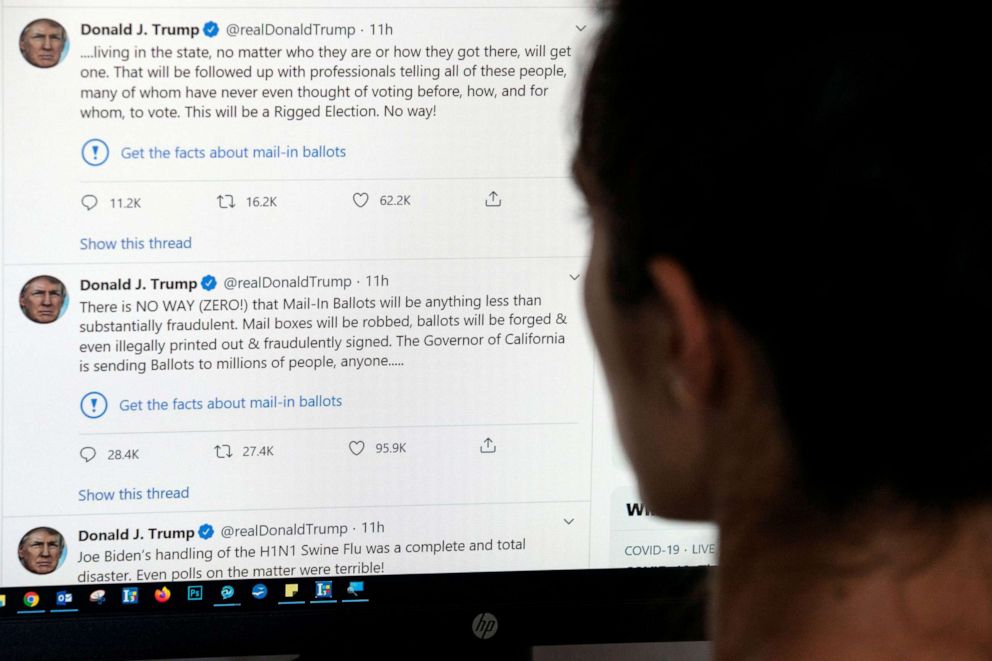
Politicians are no strangers to Twitter -- Barack Obama still holds the Guinness World Record for most Twitter followers -- but Trump's use of the platform was markedly different than previous administrations. His frenetic, provocative and sometimes erratic tweets introduced new words to the online lexicon (like "covfefe"), had the power to move stock markets and often took aim at those he didn't like.
News outlets, U.S. lawmakers and even world leaders weren't safe from Trump's Twitter barrages, which he used, gleefully, to communicate with his base, regardless of the consequences.
"My use of social media is not Presidential -- it's MODERN DAY PRESIDENTIAL," the former president tweeted in July 2017 after taking heat for his Twitter behavior. His penchant for Twitter obviated the need for a traditional press shop and aides often deferred to Trump's relentless direct messaging.
"You cannot operate a democracy when politicians can easily circumvent any normal forms of accountability that we might get from press or others," Harvard's Donavan said.
Trump's unfiltered remarks, which often contained inaccuracies or outright falsehoods, were fed directly to his supporters and the world without the ability of the press to ask questions. Regardless of their truth, his thoughts carried the power of the presidency.
Trump also figured out how to "weaponize" Twitter, according to Donavan, especially in the aftermath of his loss in the 2020 presidential election.
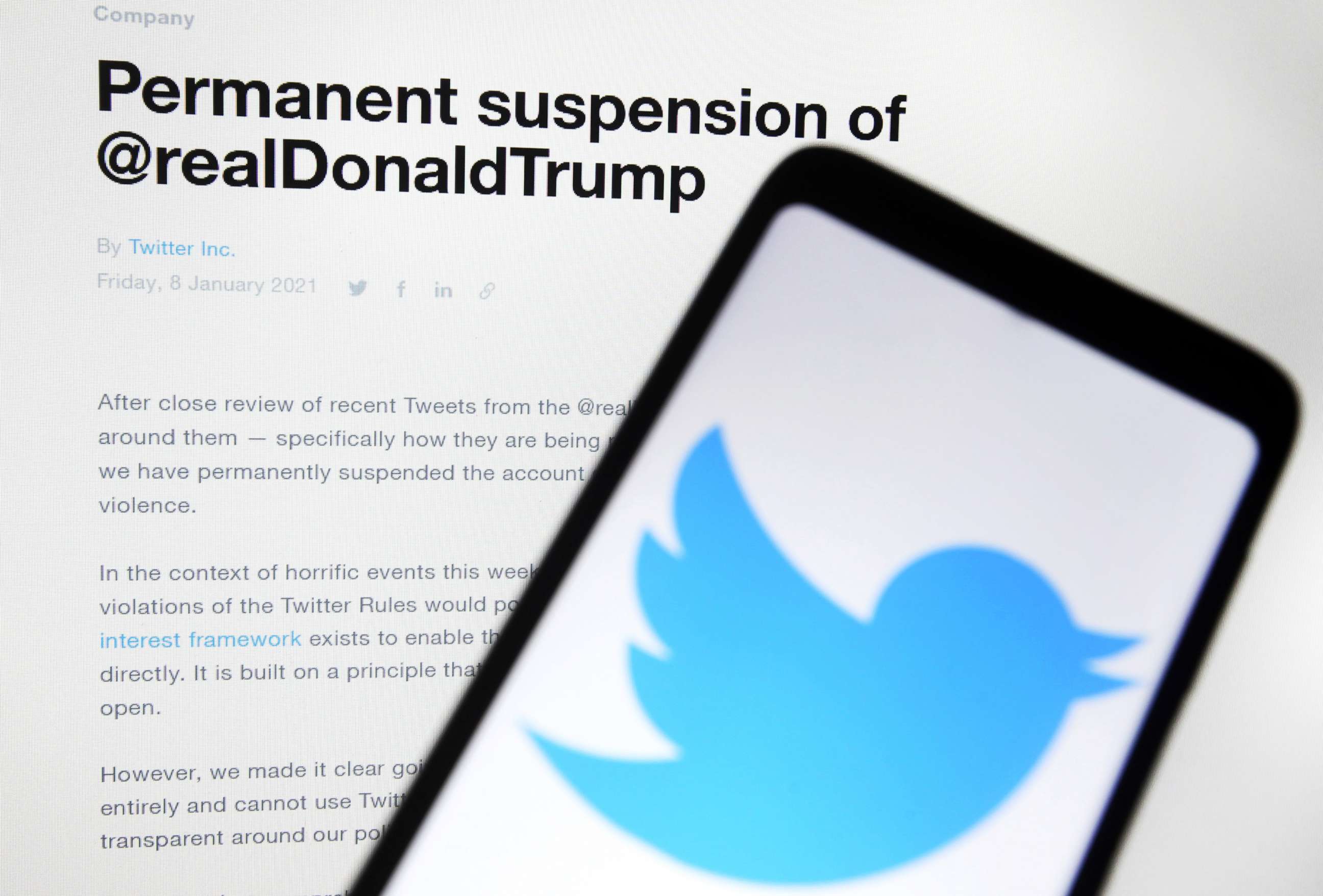
Trump and some of his followers continued to push baseless claims about election fraud, and used Twitter to double down on his refusal to concede. Twitter made efforts to stop the then-president's false claims from spreading -- including slapping them with labels that offered more context.
"Part of that weaponization includes political oppression," Donavan said. "And we don't use those words in the U.S. a lot to describe our politics, but when you're a sitting president and you call for a wild protest, the technology used as a tool for distribution and publication needs to have a plan for that."
Five people died in a riot on Jan. 6, just hours after Trump held a rally and urged his supporters to march to the Capitol. As the world watched the violence escalate, Trump shared a video on his social media accounts telling the protesters to go home, but adding "we love you" and "you're very special."
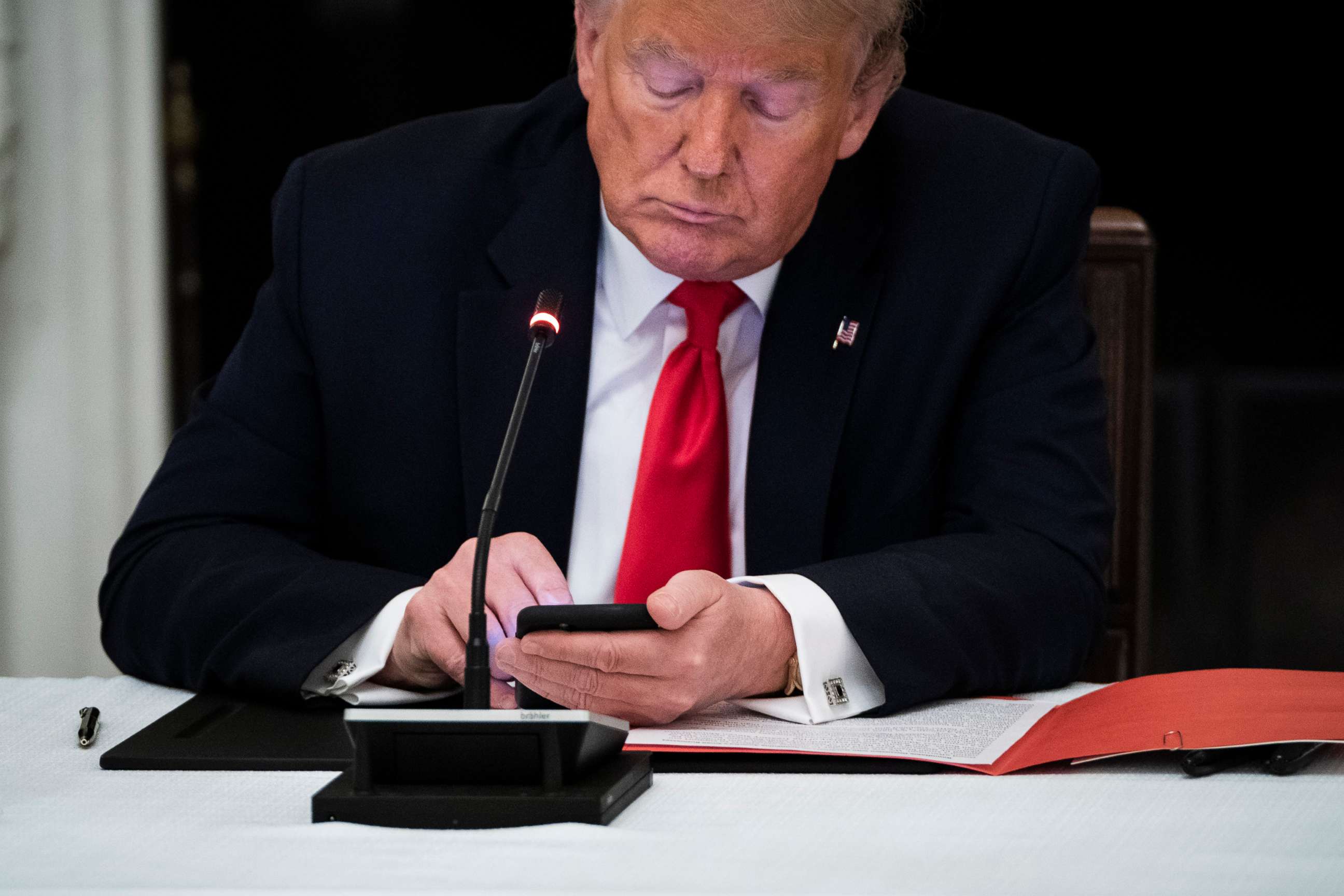
Trump was acquitted in the Senate of incitement of insurrection after being impeached by the House for an unprecedented second time. While the details of what happened that day are still being learned amid a massive federal investigation, Trump has maintained that his speech that day was "totally appropriate."
Two days after the deadly violence at the Capitol on Jan. 8, Twitter permanently banned Trump.
Dorsey stood by the decision to ban Trump in a wide-ranging Twitter thread, but admitted that it set a "dangerous" precedent. Even some Trump critics questioned the power of Big Tech in its ability to swiftly silence the president and many on the right argued that he had the right to "free speech" in his tweets.
Donavan told ABC News that she thinks the ban "was very much too late."
Not only do free speech arguments not apply to private firms, but Donavan said that in many ways Twitter has become more of an "amplification system" than a public space.
"Even in the public square, if you show up with a PA system, and you want to make sure everybody in the park hears your music, the cops are going to show up and say, 'Turn it down,'" she said. "So if we were to reckon with platform company's products as amplification systems, and not just empty vessels for speech, we may get somewhere policy-wise."
